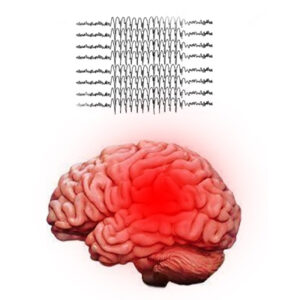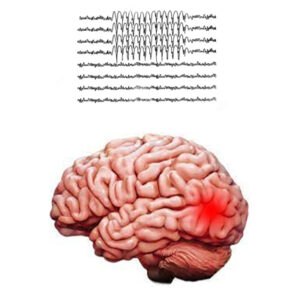What to Do at the Time of an Epilepsy Attack
How does epilepsy attack impact one’s life?
Epilepsy is a neurological condition marked by recurring seizures originating from abnormal brain electrical activity. These seizures can vary in intensity and duration, making it essential for both patients and those around them to be aware of how to respond during an epilepsy attack. While the exact cause of epilepsy is often unknown, certain triggers, such as sleep deprivation, stress, and flickering lights, can provoke seizures in susceptible individuals. With an estimated 50 million people worldwide living with epilepsy, understanding what to do during an epilepsy attack becomes crucial.Best Neurologist in jalandhar
Recognizing the Signs of an Epileptic Seizure
The first step in knowing how to respond to an epilepsy attack is recognizing the signs of a seizure. There are different types of seizures, each presenting with unique symptoms:
Generalized Seizures

Generalized-Seizures–Epilepsy-Attack,-A-Guide-by-Dr.-Sandeep-Goel,-Best-Neurologist-in-Jalandhar,Punjab,India
These seizures affect both sides of the brain and include Absence seizures (staring spells), Tonic-clonic seizures (formerly known as grand mal seizures), and Atonic seizures (drop attacks).
Focal Seizures

Focal-Seizures-Epilepsy-Attack,-A-Guide-by-Dr.-Sandeep-Goel,-Best-Neurologist-in-Jalandhar,Punjab,India
These seizures start in one specific area of the brain and can be simple or complex. Simple focal seizures do not alter consciousness, while complex focal seizures result in impaired awareness and responsiveness.
Maintaining Calmness and Ensuring Safety
During an epilepsy attack, it’s essential to remain calm and take immediate action to ensure the safety of the person experiencing the seizure and those around them:
- Stay Calm: Witnessing a seizure can be frightening, but staying calm will help you think clearly and respond appropriately.
- Time the Seizure: Note the time when the seizure begins, as this information will be valuable for medical professionals later.
- Clear the Surroundings: Create a safe space by moving any sharp or dangerous objects away from the person to prevent injuries during the seizure.
- Do Not Restrain: Avoid restraining the person during the seizure. Instead, let the seizure run its course naturally.
- Place on Side (if possible): If the person is lying down, gently turn them onto their side to prevent choking on saliva or vomit.
Offering Support During and After the Seizure
While the seizure is ongoing and immediately after, offering appropriate support can make a significant difference:
- Stay by Their Side: Remain with the person throughout the duration of the seizure to monitor their condition.
- Clear Airways: After the seizure ends, check if the person’s airways are clear. If they are having difficulty breathing, gently tilt their head to open the airway.
- Keep Reassuring: Offer reassurance and comfort to the person once they regain consciousness. Confusion and disorientation are common after a seizure, so be patient.
Knowing When to Seek Medical Attention
In most cases, seizures end on their own without the need for medical intervention. However, certain conditions need immediate medical attention:
- Prolonged Seizure: If the seizure lasts for more than five minutes (status epilepticus), or if the person experiences multiple seizures in a row, seek emergency medical help.
- Injury during Seizure: If the person sustains an injury during the seizure, particularly to the head, seek medical attention.
- Pregnancy or Diabetes: If the person is pregnant or has diabetes, it’s advisable to seek medical evaluation after any seizure episode.
When to Offer Medication
In some cases, individuals with epilepsy may carry rescue medications prescribed by their doctors. These medications are used to stop prolonged seizures and are administered in specific situations:
- As Directed by Doctor: If the person has a rescue medication prescribed, administer it according to the healthcare provider’s instructions.
- After Prolonged Seizure: If the seizure continues for more than a few minutes and emergency medical services are delayed, consider using the rescue medication as a last resort.
Supporting the Individual Post-Seizure
After an epilepsy attack, ongoing support and understanding are vital:
- Stay Supportive: Offer emotional support to the person and encourage them to seek medical follow-ups and adhere to their treatment plan.
- Monitor and Record: Keep track of seizure episodes and any potential triggers to help identify patterns that could aid in managing the condition.
Being prepared for an epilepsy attack is crucial for the safety and well-being of those affected. Understanding the different types of seizures, staying calm during the episode, and offering support afterwards can make a significant difference in the management of epilepsy. While seeking medical attention is essential in certain situations, ongoing support and understanding play a pivotal role in helping individuals with epilepsy lead fulfilling lives despite their condition.


you are truly a just right webmaster The site loading speed is incredible It kind of feels that youre doing any distinctive trick In addition The contents are masterwork you have done a great activity in this matter
Appealing segment of content I recently encountered your blog and wanted to express my appreciation for the access capital to say that I truly enjoyed reading your blog posts. Regardless, I will be subscribing to your augment and I hope you can access it frequently.
This website is phenomenal. The radiant material shows the proprietor’s enthusiasm. I’m dumbfounded and envision more such astonishing sections.